Anxiety Therapy Edmonton
Mental health counselling for anxiety disorders
Mendable Psychology offers anxiety therapy in Edmonton and online across Alberta. View our Edmonton psychologists page to learn more about how our therapists can help to treat your anxiety.

What is anxiety
Anxiety consists of the thoughts, sensations, emotions, and behaviours in response to a perceived threat. Importantly, anxiety tends to focus on outcomes in the future and overestimates the risk of threat. For example, anxiety and worry thoughts can sound like “what if I get in a car accident” or “what if I fail that exam”.
Real threats versus perceived threats
It is important to differentiate the ‘perceived threat’ of anxiety from actual threat or danger. Examples of real threat could include:
- Running into a bear in the forest
- Coming across a shark on a swim
Examples of perceived threat could include:
- Fear of coming across a shark while swimming
- Fear that others will find you as embarrassing
Anxiety signs and symptoms
Anxiety disorder symptoms can include feelings of anxiety such as worry thoughts or beliefs, physical body sensations, emotional experiences, and behaviours.
Anxious thoughts and worries
Anxious thoughts can include things such as excessive worries, racing thoughts, intrusive and obsessive thoughts. Worry thoughts are a common symptom of anxiety disorders. For example, “what if I am late” or “what if I don’t pass the exam”. Obsessive thoughts are “sticky” recurring thoughts that include a fixation with something in particular.
Physical and body sensations of anxiety
Physical sensations of anxiety can include things such as a racing heart rate, shortness of breath, chest pains, heart pounding or palpitations, dizziness, and upset stomach.
Emotions associated with anxiety
Emotions associated with anxiety can include panic, fear, dread, and nervousness.
Behaviours related to anxiety
Anxiety can be related to behaviours such as :
- avoidance of people, places, or situations
- compulsions (the urge to act on a behaviour to reduce feelings of anxiety)
- repetitive checking
- perfectionism
- people-pleasing or difficulty with assertive communication
- reassurance seeking
- difficulty falling asleep
Experiencing an ongoing untreated anxiety disorder can negatively impact your quality of life. In fact, people with untreated anxiety disorders often miss out on meaningful events and experiences or tolerate them with much distress.
Factors that influence anxiety
Several risk factors that can contribute to the development of anxiety disorders.
Biology and genetics
One of the main risk factors is genetics. If you have a family history of anxiety disorders of family members who experiences anxiety, you may be more likely to develop one yourself. Additionally, certain personality traits and temperaments may be prone to be more cautious or worry excessively.
Environment and learning
Environmental factors can also play a role in the development of anxiety disorders. While anxiety disorders tend to run in families, this can also be from learning anxious behaviours. Traumatic events, such as abuse or the loss of a loved one, can trigger the onset of anxiety symptoms. Chronic stress, such as financial difficulties or a demanding job, can also contribute to the development of anxiety.
Medical conditions
Other medical conditions can sometimes be linked to anxiety disorders as well. For example, individuals with certain chronic illnesses, such as heart disease or diabetes, may be more prone to experiencing anxiety. Substance abuse can also increase the risk of developing an anxiety disorder.
Having risk factors doesn’t guarantee developing anxiety disorder. However, being aware of these factors can help you take steps to manage your anxiety and seek treatment if necessary.
Anxiety and depression
More than one mental health condition can occur at the same time. This is referred to as “co-occurring conditions” or “co-morbid”. People with anxiety disorders frequently experience anxiety and depression occurring together. A variety of explanations for this exist.
One reason that anxiety and depression often co-exist is that anxiety symptoms tend to limit how people spend their time and make decisions. When people avoid people or things they previously enjoyed because of anxiety, this may cause them to have a low mood.
Anxiety symptoms do not always indicate an anxiety disorder
Not everything that makes you feel anxious is truly anxiety. For instance, feeling anxious in a situation that is objectively risky or unsafe is more likely a normal (and healthy) fear response. If the emotion of fear makes sense given the situation it is important to focus on addressing the risk in that case, rather than reduce “anxiety”.
Furthermore, body sensations of anxiety are also tricky to untangle. For example, sensations commonly experienced as anxious are not exclusive to anxiety disorders. Feeling dizziness, faint, shortness of breath, or chest tightness could have a number of underlying causes for instance. It is important to work with a medical provider to determine what is causing your symptoms.
Anxiety disorder diagnosis
A diagnosis of anxiety is a medical or psychological condition based on having a number of symptoms present over a specific period of time. The symptoms and length of time depend on the specific type of anxiety disorder in particular. When diagnosing an anxiety disorder, most psychologists refer to the criteria in the diagnostic and statistical manual of mental disorders (DSM-5).

Types of anxiety disorders
There are many different types of anxiety disorders, each with certain unique features. Some anxiety disordered commonly experienced by adults include (but are not limited to):
- Generalized Anxiety Disorder (GAD)
- Social Anxiety Disorder
- Panic Attacks and Panic Disorder
- Obsessive Compulsive Disorder (OCD)
- Health Anxiety
- Specific Phobias
Generalized Anxiety Disorder (GAD)
As the name implies, Generalized Anxiety Disorder (also known as GAD) is characterized by worry thoughts and feeling anxious across a range of concerns, most of the time and over a lengthy period of time. In particular, people with GAD are often self-described ‘worriers’ and tend to over-estimate the possibility of a worst case scenario occurring.
Read more about Generalized Anxiety Disorder
Social Anxiety Disorder (Social Phobia)
Social Anxiety Disorder, sometimes also called Social Phobia, is a type of anxiety disorder that is specific to anxiety or fear within social settings. Shyness or introversion, on the other hand, is different from social anxiety disorder. Individuals with social anxiety experience significant distress specifically when in the feared social setting or interaction or significant efforts to avoid it due to the distress.
Read more about Social Anxiety and Social Phobia
Panic Attacks and Panic Disorder
Panic disorder is a diagnosis for when a panic attack develops into fear of having repeated panic attacks. A panic attack is a brief but extremely intense cluster of anxiety symptoms. Panic attacks have a sudden onset seeming to come out of nowhere, and for the most part peak within 10 minutes. Panic disorder involves frequently worrying about having recurrent attacks and for this reason making changes to avoid potential triggers as a result of this fear.
Read more about panic attacks and Panic Disorder
Obsessive-Compulsive Disorder (OCD)
Obsessive Compulsive Disorder (OCD) is a form of anxiety which includes unwanted and distressing intrusive thoughts coupled with compulsions. Compulsions are behaviours or other rituals intended to address the unwanted thought and indeed, temporarily reduce the anxiety. Overall OCD is frequently misunderstood and depicted in media in ways that do not accurately reflect the experience of most individuals with this diagnosis.
Read more about Obsessive-Compulsive Disorder
Health Anxiety
Obsessive Compulsive Disorder (OCD) is a form of anxiety which includes unwanted and distressing intrusive thoughts coupled with compulsions. Compulsions are behaviours or other rituals intended to address the unwanted thought and indeed, temporarily reduce the anxiety. Overall OCD is frequently misunderstood and depicted in media in ways that do not accurately reflect the experience of most individuals with this diagnosis.
Read more about Obsessive-Compulsive Disorder
Specific Phobias
Obsessive Compulsive Disorder (OCD) is a form of anxiety which includes unwanted and distressing intrusive thoughts coupled with compulsions. Compulsions are behaviours or other rituals intended to address the unwanted thought and indeed, temporarily reduce the anxiety. Overall OCD is frequently misunderstood and depicted in media in ways that do not accurately reflect the experience of most individuals with this diagnosis.
Read more about Specific Phobia Disorders
Anxiety Therapy Edmonton
Indeed, anxiety disorders are among the most common mental health concerns. Fortunately, anxiety disorders are treatable and much research has studied a variety of anxiety therapy evidence-based treatments.
When should I seek anxiety therapy treatment?
Seeking anxiety therapy treatment is an important step in improving your mental health. In short, treating anxiety can help you to function better personally and professionally. Additionally, anxiety therapy can support you to live more fully in the present moment, and enjoy engaging in life with less distress.
What are the most common anxiety therapy approaches?
There are several types of evidenced-based anxiety therapy approaches to treat anxiety disorders.
Cognitive Behavioural Therapy
Cognitive behavioural therapy (CBT) is commonly used as a first line treatment for different types of anxiety disorders.
Acceptance and Commitment Therapy
Acceptance and Commitment Therapy (ACT) is a treatment approach that is effective in treating anxiety.
Exposure and Response Prevention
There are also specialized ODC therapy treatment options, most commonly used is Exposure and Response Prevention Therapy (EX/RP). Generally, therapy works to treat anxiety though exposure (ie. practicing with the distress of the anxiety) along with addressing or changing the relationship to thoughts that may be unhelpful.
Medications to treat anxiety
Medications are also commonly prescribed to treat anxiety disorders. While psychologists in Canada do not prescribe medications, a psychologist or mental health therapist can help to work alongside with your doctor in treating your anxiety. Selective serotonin reuptake inhibitors (SSRIs) are a class of medication that are approved for the treatment of different types of anxiety and depression and commonly prescribed to treat anxiety disorders.
Anxiety Therapy at Mendable Psychology
Our psychologists, provisional psychologists, and practicum student therapists treat anxiety disorders including generalized anxiety, social anxiety, health anxiety, panic disorders. Our therapists collaboratively work with their clients to determine the best evidence-based anxiety therapy treatment approaches that aligns with the goals and preferences of their clients.
At Mendable Psychology, therapists specialize in providing tailored and individualized counseling approaches to address anxiety, ensuring that each client receives care that resonates with their unique needs and goals. Using evidence-based methods such as Cognitive-Behavioral Therapy (CBT), Acceptance and Commitment Therapy (ACT), Eye Movement Desensitization and Reprocessing (EMDR), mindfulness techniques, and exposure therapy, the team develops an anxiety therapy treatment plan that adapts strategies to align with the client’s personal experiences, preferences, and pace.
For clients dealing with specific triggers, therapy is customized to focus on those areas, while those seeking deeper understanding benefit from psychodynamic or trauma-focused approaches. Our therapists also integrate holistic care by considering the our client’s cultural background, lifestyle, and existing strengths, creating a collaborative and empowering therapeutic experience. This personalized attention not only alleviates anxiety but also equips clients with practical tools and confidence for lasting mental well-being.
Reaching out and early intervention for anxiety therapy
When possible, it is beneficial to begin treatment for anxiety symptoms and disorders early. Our therapists work to help manage stress and burnout to help treat anxiety concerns preventatively. Early intervention can mean anxiety symptoms do not cause as much disruption and time in treatment may be shortened. Preventative anxiety interventions can also reduce the likelihood of developing secondary issues related to the anxiety such as depression, physical health problems, or substance abuse.
Finding empowerment through anxiety therapy treatment
Anxiety counseling offers more than just relief from distressing symptoms; it is a transformative process that can empower individuals to take control of their mental health, emotions, and overall well-being. This empowerment stems from a combination of self-awareness, skill development, and confidence-building that occurs during the therapy process. Here’s a deeper look at how anxiety counseling fosters empowerment:
Gaining self-awareness of your anxiety symptoms
Understanding Triggers: Counseling helps individuals identify what causes their anxiety, whether it’s specific situations, thoughts, or patterns of behavior.
Recognizing Thought Patterns: Cognitive-behavioral techniques often focus on uncovering and reframing negative or distorted thought patterns that fuel anxiety.
Building Emotional Insight: Clients learn to understand and name their emotions, which is a crucial step in gaining control over their responses.
Developing practical skills in therapy to manage anxiety
Coping Mechanisms and Relaxation Techniques: Being able to increase relaxation in your body and mind is an important part of anxiety management. Clients are taught techniques like deep breathing, mindfulness, and progressive muscle relaxation, which can be used in moments of acute anxiety.
Problem-Solving Skills: Therapists help individuals break down challenges into manageable steps, making overwhelming situations feel more approachable.
Behavioral Strategies: Techniques like gradual exposure (in cases of phobias or social anxiety) empower clients to confront fears in a controlled and systematic way.
Increasing your sense of control and regaining independence
Taking Responsibility for Change: Counseling encourages clients to take an active role in their healing process. This involves setting goals, tracking progress, and celebrating successes. By addressing negative self-talk, individuals can move from a mindset of helplessness (“I can’t handle this”) to one of capability (“I have the tools to cope with this”).
Shifting the Narrative and Challenging Anxious Thoughts: Indeed, a critical part of managing anxiety is changing the relationship you have with the thoughts that are causing you distress. To improve the anxiety, firstly, there must be an awareness of the narratives associated with the anxiety. Strategies include ways of identifying thoughts that are either unhelpful, untrue, or both. Changing the relationship to these thoughts can include developing a replacement thought with one that is more true and helpful or creating space and distance from the thought altogether.
Establishing Boundaries: Many anxiety issues stem from overcommitment or difficulty saying no. Counseling empowers clients to set healthy boundaries and prioritize their needs.

Anxiety therapy resources
Anxiety Canada is a website with comprehensive educational information and coping strategies for all types of anxiety disorders across all ages
Mood gym is an online interactive CBT program based out of Australia intended for older teens and adults. The programs focus on treating depression and anxiety.
MindShift is a CBT based app created through Anxiety Canada that can help to educate and cope with symptoms of anxiety
Furthermore, there are many additional excellent self-help resources available for anxiety management listed on our resources page.
Read more about anxiety disorders and treatment
Imposter Syndrome
Understanding Imposter Syndrome Why You Feel Like a Fraud (Even When You’re Not) Have you ever achieved something significant—whether a promotion, praise from a supervisor,
The Achievement Anxiety Loop
The Achievement Anxiety Loop Why Success Doesn’t Always Feel Good For many high-achieving individuals, success isn’t followed by a sense of ease or lasting fulfillment—it’s
Understanding Relationship Anxiety
Understanding Relationship Anxiety When Worry Gets in the Way of Connection Relationships can be a profound source of connection, love, and growth—but for some, they
Anxiety Therapy Edmonton | Contact Us
Mendable Psychology | Anxiety Treatment | Counselling for Anxiety
Office located in Mayfield West Edmonton
- (587) 415-0850
- 10458 Mayfield Rd NW, Edmonton, AB
- [email protected]
- Schedule online
